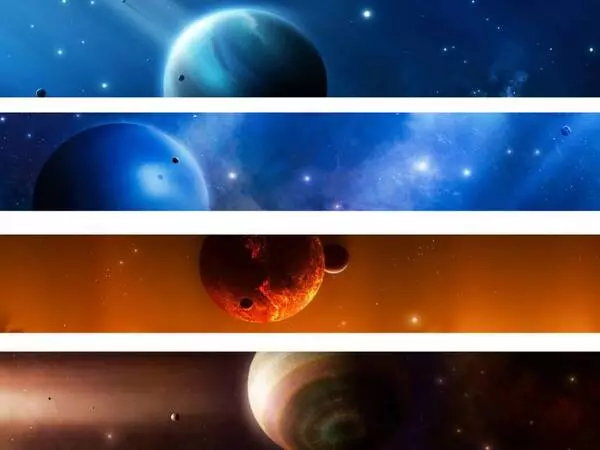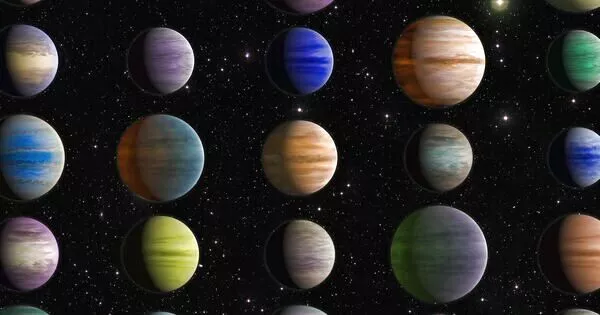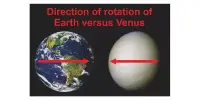A multinational team of researchers studied data from 25 exoplanets and discovered some correlations between atmospheric features such as heat profiles and chemical abundances. This is the first time that exoplanet atmospheres have been analyzed as a group rather than as individuals. These findings will contribute to the development of a generalized theory of planet formation, which will increase our understanding of all planets, including Earth.
There are currently about 3000 verified exoplanets, or planets orbiting stars other than the Sun. It is difficult to study them in depth because they are so far away from Earth. Determining the features of even one exoplanet has been a significant achievement.
In this research, astronomers used archival data for 25 hot Jupiters, gas giant planets that orbit close to their host stars. The data included 600 hours of observations from the Hubble Space Telescope and more than 400 hours of observations from the Spitzer Space Telescope.
The chemical composition of exoplanetary atmospheres can reveal a lot about the physical (and presumably life-bearing) circumstances on these worlds. The transit spectroscopy method is the most successful for detecting the chemical composition of an exoplanetary atmosphere. When an exoplanet passes in front of its host star, a small fraction of the stellar light passes through the exoplanetary atmosphere, where molecules absorb some wavelengths while allowing other wavelengths to flow through undisturbed. The chemical makeup of the atmosphere can be deduced by measuring the fraction of stellar light that can penetrate the atmosphere at various wavelengths.
The theory of gas giant formation proposed by my students and I predicted diversity in the composition of hot Jupiter atmospheres, and helped to motivate this systematic survey of atmospheric characteristics.
Masahiro Ikoma
However, the proportion of stellar light that penetrates through the atmosphere of a transiting exoplanet is extremely small, limiting both the telescopes/instruments that can be utilized and the planetary system that can be viewed. The ongoing quest for exoplanets aids us in determining the optimum systems for transit spectroscopy.
The presence or absence of a “thermal inversion” was one of the characteristics evaluated by the researchers. Because planetary atmospheres trap heat, the temperature rises as one probes further into the atmosphere. Some planets, however, exhibit a thermal inversion, in which the upper layer of the atmosphere is warmer than the layer underneath it.
On Earth, the presence of ozone generates a temperature inversion. The scientists discovered that almost all of the hot Jupiters with thermal inversions had evidence for hydrogen anion (H-) and metallic species such as titanium oxide (TiO), vanadium oxide (VO), or iron hydride (FeH).

Thermal inversions were practically never observed on exoplanets lacking these compounds. It is difficult to draw inferences based solely on correlation, but because these metallic species are excellent absorbers of stellar light, one idea maintains that when these chemicals are present in the upper atmosphere, they absorb light from the host star and cause the temperature to rise.
“The theory of gas giant formation proposed by my students and I predicted diversity in the composition of hot Jupiter atmospheres, and helped to motivate this systematic survey of atmospheric characteristics,” says Masahiro Ikoma of the National Astronomical Observatory of Japan, a co-investigator in this study.
According to a statistical estimate based on data from NASA’s Kepler Space Telescope, our galaxy has more planets than stars. That means there are more than a trillion planets in our galaxy alone, many of which are the size of Earth.
“Right now, we know for the first time that tiny planets are very frequent,” said Sara Seager, a Massachusetts Institute of Technology professor and pioneer in exoplanet research. “It’s incredible. Before Kepler, we had no means of knowing. We’ll just state it plainly: “They’re everywhere.”
This new discovery will assist enhance theoretical models by detecting groups of similar exoplanet atmospheres, bringing us closer to a complete understanding of planet formation. Additional data from next-generation satellite observatories, including as the James Webb Space Telescope, Twinkle, and Ariel, may offer data for thousands of exoplanets in the future decade, enabling and mandating new categories for identifying exoplanets beyond the approaches investigated in this study.
















